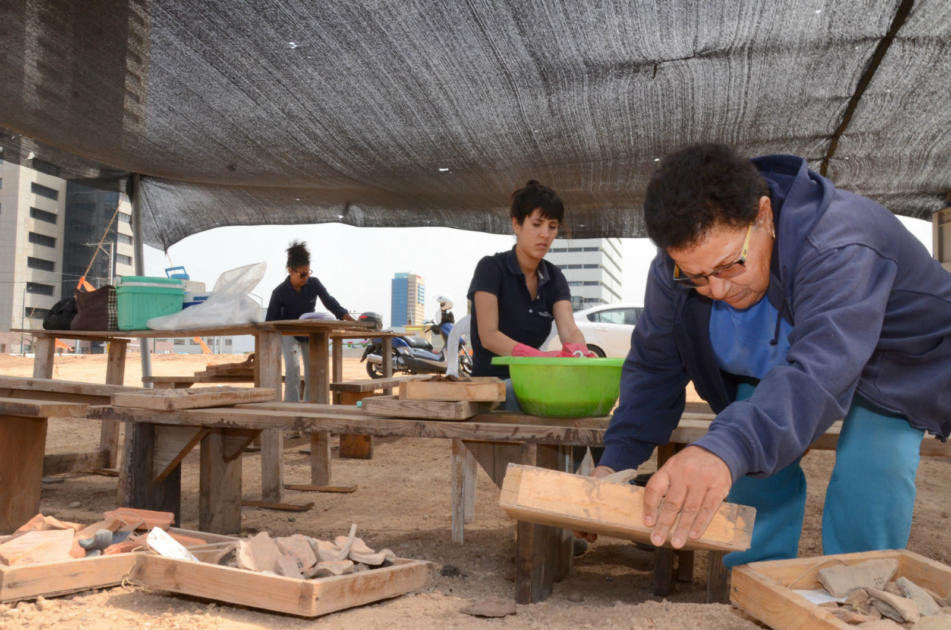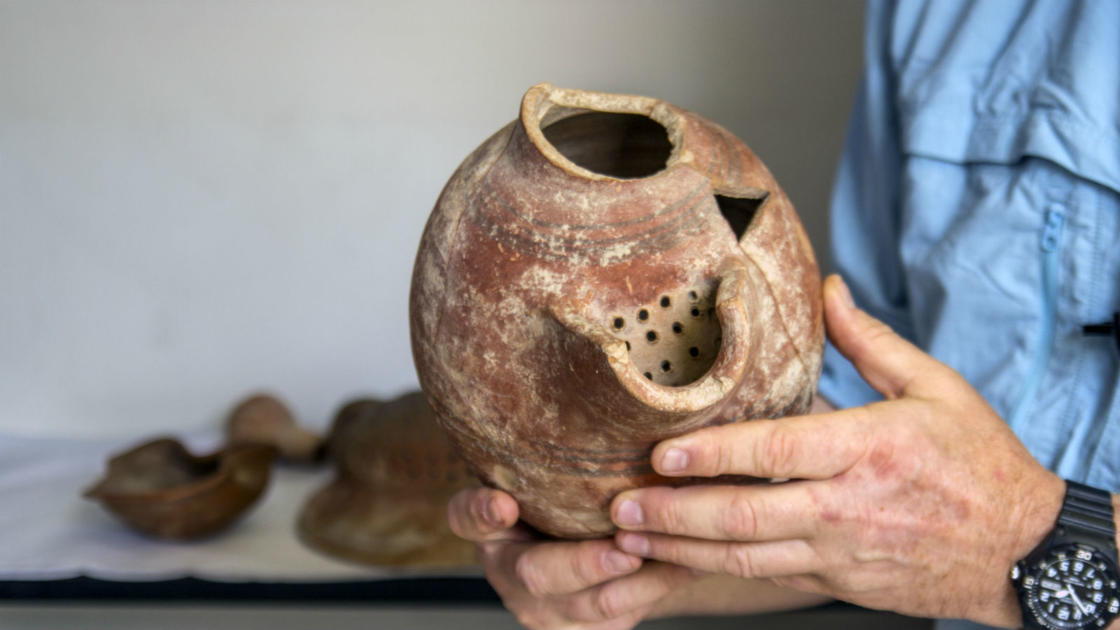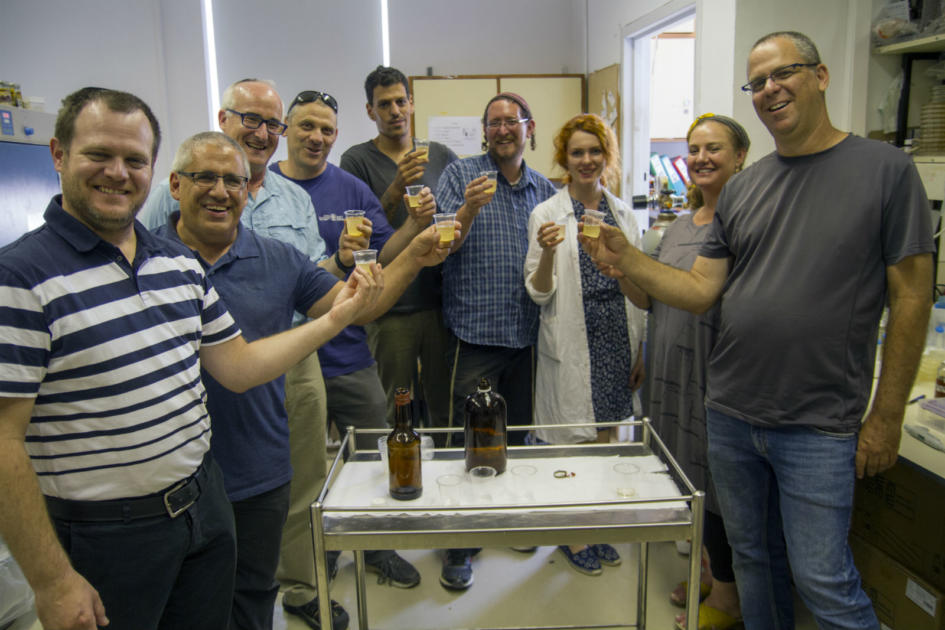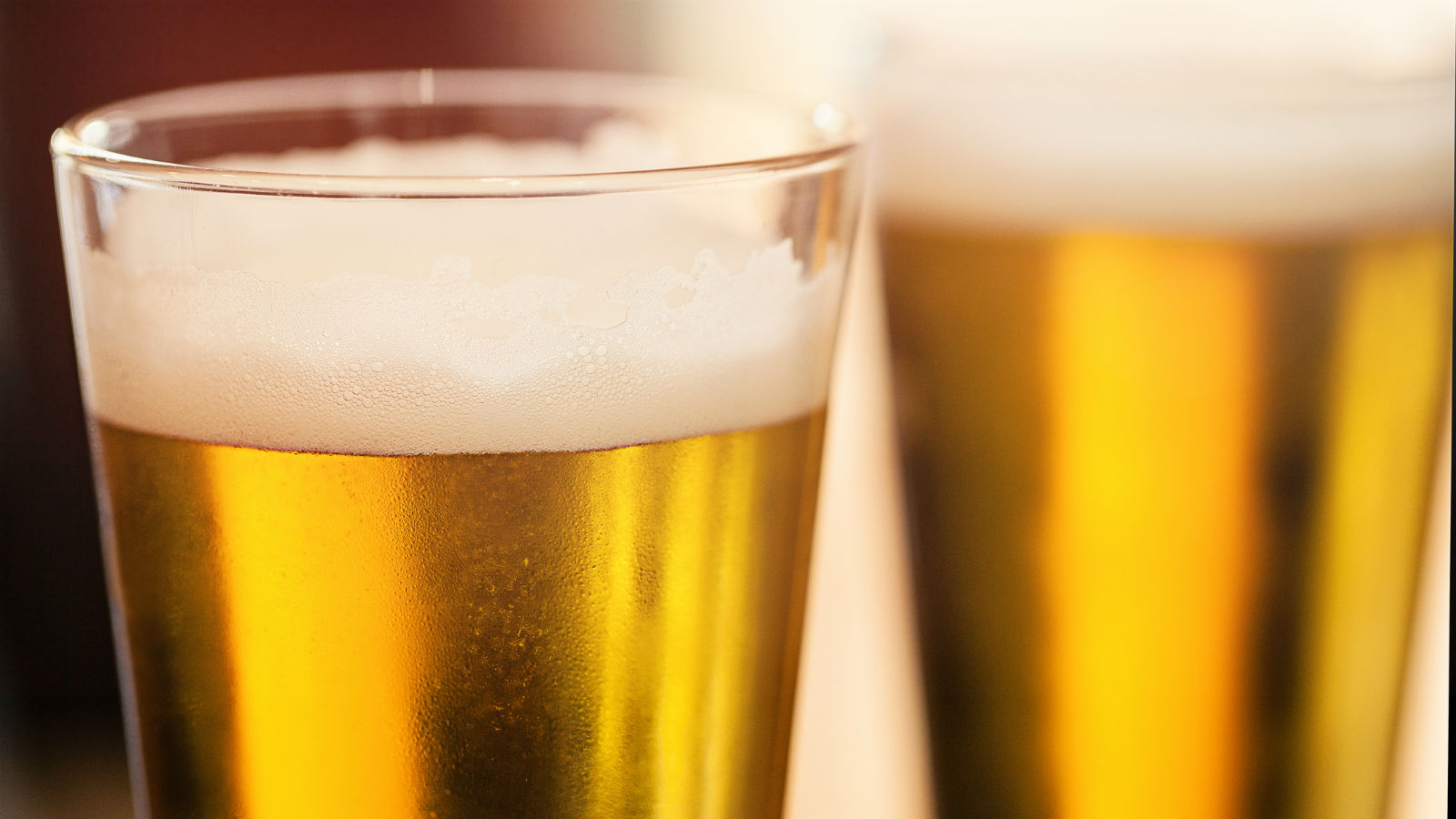For the first time ever, scientists used original ingredients to recreate the most popular drink in the ancient world: beer.
Israeli archeologists found beer remains at various sites in the land of Israel. Locations include a 5,000-year-old Egyptian army outpost and an Egyptian brewery from 3,000 years ago, located in the heart of Tel Aviv. A third site, dating back 2,400 years, held beer remains from the Persian conquest of Israel. Perhaps, scientists posited, with the yeast extracted from the nano pores of the ceramic vessels that once held ancient beer, microbiologists could recreate the daily beverage of the Pharaohs.
Some archeologists believe that the pyramids in Egypt would not have been built without beer: Workers received between four to six liters a day to fill their bellies and to quench their thirst.

The Nosher celebrates the traditions and recipes that have brought Jews together for centuries. Donate today to keep The Nosher's stories and recipes accessible to all.
“In the ancient world, beer was a very common, everyday drink for all,” says Dr. Michael Klutstein, who together with Dr. Ronen Hazan, microbiologists at the Institute of Dental Medicine at the Hebrew University in Jerusalem, led the research into the make-up and recreation of this ancient brew.
“Beer,” says Klutstein, “was one of the foundations of the ancient world’s diet. Even small children drank it since water was unclean. The fermentation process in producing the beer decontaminated the water.”
Klutstein and Hazan gathered a team of scientists, archeologists, and local beer makers. Together they isolated a variety of yeasts hidden in the walls of the beer vessels, which they then revived and used to make new beer. So for the first time ever, beer was made from ancient yeast.

“We didn’t try to recreate the beer that the Pharaohs drank,” says Klutstein. “We used a uniform, modern recipe for all of the yeast we extracted. But each type of ancient yeast resulted in a different taste profile for the beers we created. The next effort will be to use wheat and barley grown from ancient seeds, together with original pots and ancient brewing methods so that we can end up with the original taste.”
Now that they know that this 5,000-year-old yeast is viable for brewing beer, their goal is to recreate and, one day, sell ancient beer. Other ancient foodstuffs that can be recreated using this approach are foods that use yeast and bacteria like cheese, yogurt, and even certain kinds of pickles.

The yeast from the Egyptian army outpost found in Israel comes from the same period in which, according to the Hebrew bible, the Israelites were slaves in Egypt. At this moment, only Israelis are involved in the beer project. “It would be a dream if we could involve Egyptians in this, too,” Klutstein says.



